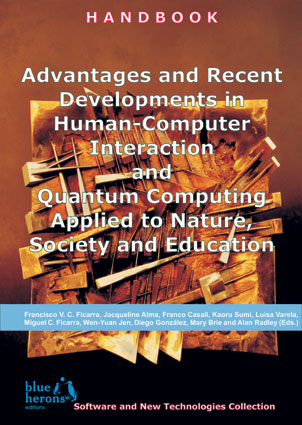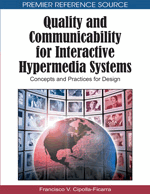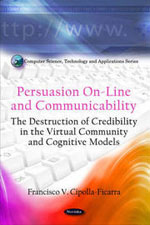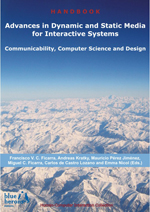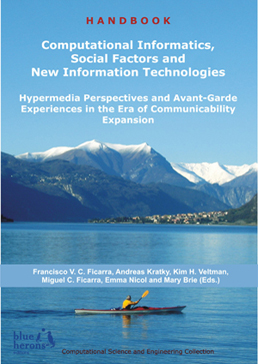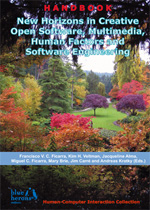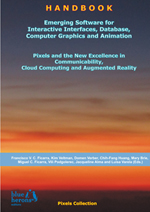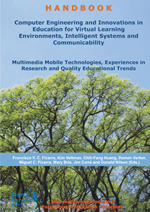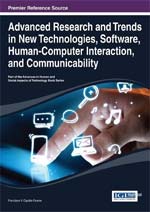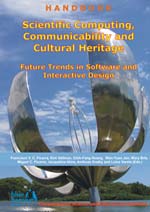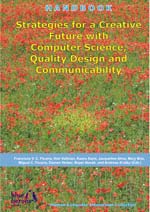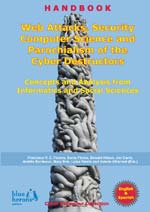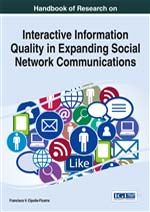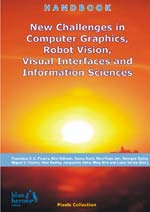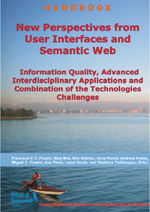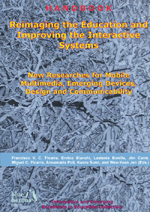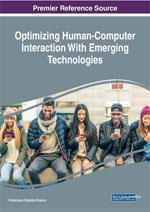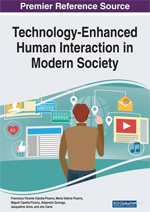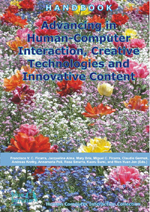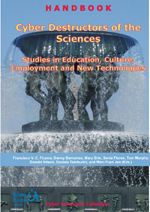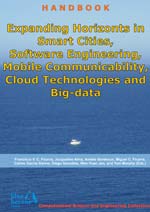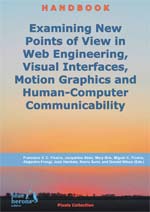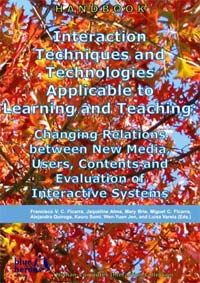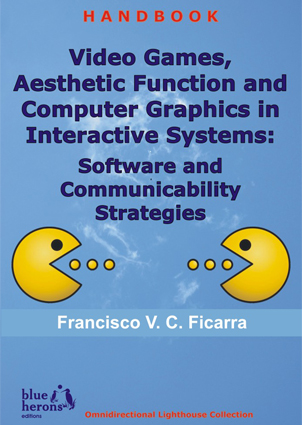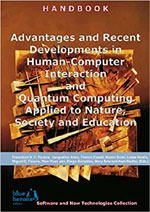Advantages and Recent Developments in Human-Computer Interaction and Quantum Computing Applied to Nature, Society and Education
:: Software and New Technologies Collection ::
:: Revised Selected Chapters ::
Main Editor: Francisco V. C. Ficarra
Co-editors: Jacqueline Alma (Vancouver, Canada), Franco Casali (Bologna, Italy), Kaoru Sumi (Hakodate, Japan), Luisa Varela (Perpignan, France), Miguel C. Ficarra (Spain and Italy), Wen-Yuan Jen (Taiwan, China), Diego González (Bologna, Italy), Mary Brie (La Valleta, Malta) and Alan Radley (Blackpool, UK)
Editorial Assistants: Amélie Bordeaux (Lyon, France) and Jim Carré (Willemstad, Curaçao)
Book Details
• ISBN: 10979-12-80096-08-1 :: DOI: 10.979.1280096/081
• Publisher: Blue Herons Editions
• Location: Italy (Bg)
• Subjects: Quantum Computing, Qubits, Education, Technology, Algorithms, AI, Web, R&D
• Subjects: Simulation, Visualization, UCD, Agricultural Robotization, Climatology, Formulas
• Subjects: Information, Models, Biology, Feynman, Hardware, Software, Economy, Materials
• Subjects: Nanorobotics, Superconducting, Shor's Algorithm, De Finetti's Theorem, Design
• Subjects: Industrial Automatization, HRI, Formal and Factual Sciences, Omega Generation
• Subjects: Computer Graphics, Ubiquitous Computing, Machine Learning, Bell's Theorem
• Subjects: Intel, Greenhouse, Cryptography, Shannon's Theorem, Social Networks, Context
• Subjects: Evaluation, Boltzmann-Gibbs and Tsallis Entropies, Nature, Ecosystems, Society
• Subjects: 3D, MR, Majorana Equation, Pandemic, Students, Interference, Teleportation, ICT
• Subjects: Communicability, e-Learning, Google, Neural Networks, Scientific Database, RSA
• Subjects: Nanotechnology, Complexity Theory, Users, Deep Learning, Grover's Algorithm
• Subjects: Heuristic, Programming Languages, QCL, Recursive Fourier Sampling, Microsoft
• Subjects: HCI, 'G' Factor, UX, Interfaces, AR, Usability, OQDL, Renewable Energies, IBM
• Copyright: 2021
• Collection: Software and New Technologies Collection
• Series volume: I
• Publication date: December, 2021
• Binding: Paperback
• Grade level: General
• Language: English
• Illustrations: Yes
• Colour: Yes
• Pages: 232
• Dimensions: 11.41x8.26x0.55 in. 1.24 lbs. :: 290x210x14 mm. 563 gr.
Preface
Caution and investigation are a necessary armor against error and imposition.
Alexander Hamilton (1755 – 1804)
In this editorial project, we focus on one of the sectors that are currently drawing the attention of a high number of scientists, which is quantum computing and all its derivations of the main theoretical-practical advantages of its use. This is a new global revolution in the context of new information and communication technologies. The progressive decrease of the hardware and the potential increase of the calculation speed of the processors in tiny technological devices of the static or dynamic type, allows to simulate structures and systems that currently belong to the realm of science fiction.
The miniaturization of the hardware, joined to the potential of the software, will radically transform the social communications in the educational, health, labor systems, etc. Besides, the rise of the use of artificial intelligence, together with the quantum technologies, will be an indispensable resource for the resolution of myriad problems that currently have no solution, or which require great investments in human and/or financial capital.
In this first approach to the possible advantages, a serious bridge will be established, which respects and ponders, each one of the components of the epistemology of the sciences, within human-computer interaction and quantum computing. The motivations of this demand are due to the fact that it is intended to encompass two fundamental areas, for all humankind, in the 21st century, such as: nature and society. Now, a brief summary of the main aspects found in each of the chapters:
The authors of “A Brief History of Quantum Computing” are Tarik Delić and Ahmed Hadžić. In it there is an extensive bibliographic research work to establish the origins of quantum computing, divided into two large groups: the last 25 and 50 years, respectively. With this work, its authors highlight the contributions made by Richard Feynman and his colleagues in the field of physical simulations through computers. The reasons why it was necessary to create quantum computers are also detailed. The temporal division facilitates the understanding of the state of the art of computing, from the point of view of hardware and software, mainly, revealing the existing limitations and how these limitations have been overcome, through the passage of time. The extensive recommended bibliography makes this work an interesting and educational way of understanding technological evolution, answering the three classic questions: Where do we come from? Where are we? and Where are we going? Finally, it is interesting to note how many predictions of the pioneers in the field of quantum computing have been correct and/or developed.
The author of the research work “Measuring the Intersection between HCI and Quantum Computing” makes a critical-constructive analysis of the state of the art of human-computer interaction to be partially extended to quantum computing. The analysis of Francisco V. C. Ficarra begins with the professional profiles that, during the last three decades, have been self-included in the HCI, when in fact they are suitable professionals to address the topics of mathematics, physics, chemistry, biology, nuclear, electronics, and so on. In other words, it is the natural realm of quantum computing. The benefits that would have contributed to the development of this new scientific-educational R&D sector are listed. Similarly, the damages caused in the HCI are presented from the epistemological and professional point of view. An extensive list of professionals, with their corresponding universities, faculties, laboratories, etc., are analyzed to verify how the natural and factual sciences have been eating away at the natural environment of the social sciences, through the HCI, UX and EU, for example. Furthermore, the economic-social impact of these deviations is also measured, beginning with the closure of real companies, in the face of the rise of usability engineering, at the beginning of the new millennium; the transformation into public limited companies in the management of human and financial resources of public universities, through the HCI and with the financial crisis of the first decade of the new millennium. Lastly, the poor didactic results obtained with the HCI, UX and e-Learning in the face of the pandemic, especially in Ibero-America. All this from the perspective of the ‘G’ Factor and Omega Generation. Simultaneously, the reasons are explained why, before including HCI in quantum computing, it is necessary to exclude the Omega Generation from this process and avoid the continuous and repetitive cycle of the G factor, from the beginning of the '90s to the present day.
Under the rhetoric question: “Is Finance the Achilles Heel of Quantum Computing?” its authors –Paul Sammut, Kevin Micallef and Silvio Camilleri– present us with a set of tactics and methods to solve the security problems derived from quantum cryptography in the field of financial transactions. The study begins with a detailed analysis of the techniques used to this day. They also explain with graphics how the current system is not efficient in the face of the new paradigm of quantum computing. The future weaknesses of cryptography techniques are disclosed in detail in the face of the development of quantum computer systems and what are the main areas to guide future research. In this sense, its authors outline the main areas of knowledge that should be included in the new university education programs to accelerate the process of expanding interest in quantum computing among computer engineering students.
The author of the “Quantum Computing: Towards a Modern Synergy between the Computing Industry and University Education of the New Millennium” chapter is Petr Melnichuk. In the present investigation, its author generates a bridge between the academic context and the industrial context. The study focuses on the software and hardware developments of two American firms such as IBM and Microsoft. At the same time, it demonstrates how the advances in these contexts can be used in the scientific field and in commercial applications simultaneously. To this end, didactic methods and instruments for teaching and learning are presented. An extensive number of R&D projects show how in the coming years this new technology will be implemented in contemporary society, starting with artificial intelligence. New areas are also presented where new professions can be glimpsed, in the social, educational, commercial, industrial field, etc., in the short term for thousands and thousands of people with knowledge in physics, mathematics, chemistry, computer science and electronics.
In the chapter “Quantum Informatics Applied to Productive Development in East Africa”, Judith Scahill, Elias Debelo, Yadesa Melaku, John Cutajar and Agimassie Agazie highlight the importance of quantum technology to simulate in real time the impact of climate change on the flax harvest in the East African region, mainly in Ethiopia. It is a work that involves various fields of study ranging from geology, soil composition, etc., through the impact of native flora and fauna to the export and transformation of flax into food and clothing products. The algorithms presented are mainly related to the current simulations and eventual improvements that can be introduced with a higher speed of calculation and visualization of the results obtained. The formulas used are fundamentally related to climatology, its influence on natural resources and the projection towards the development of the regional economy.
The authors of the research called “Advanced Materials for Superconducting Architectures” are Chevonne Twomey, Anne McKeehan, Haoran Li, Jun Feng and Hao Zhang. They present us with advances in materials for 2D and 3D superconducting architectures, as well as the construction of the first prototypes based on such architectures. The main goal of the authors is to publicize the advances in superconducting and nanoarchitectures. With a didactic language and including 2D/3D graphics, comparative tables, formulas, among other graphic and textual resources, and in spite of the complexity of the theoretical topics presented, are very pleasant and easy to understand for readers interested in these topics, such as the computer simulations, elaboration of methods, characterization methods, experimental studies and so on. Each of the themes presented includes an exhaustive state of the art. They also precisely define each of the roles and tasks carried out by the members of an interdisciplinary team, in order not to overlap or repeat activities that increase costs in research. The work is accompanied by a wide group of basic bibliographical references and recommended readings. Finally, they reveal the advantages of working in a coordinated and planned manner, achieving each of the proposed objectives in the scheduled times.
The title chosen by the authors of this chapter is “Building a New Marketing around Quantum Computing Applied to Things Technology.” Tove Friis, Anne Sigh, Glenda Napier, Halvor Strom, Henrik Dahl and Seren Lund, reveal the impact that the use of certain terms is having through marketing in new media, with regard to quantum computing. The authors have focused their research on software, sensors, ubiquitous computing, machine learning, and healthcare systems in Denmark and Norway. It is a study that analyzes the social impact on the collective imagination of the future of this new generation of computers and the potential for use in the scientific field. In particular, the study focuses on remote healthcare systems, tracing a kind of quadrilateral between doctors, scientific databases, simulations and patients. In addition, the authors investigate new techniques to achieve an efficient and robust integration of this interrelation, through the study of the correction of the errors detected. Finally, the first results obtained in the field of marketing allow us to analyze the demands for specialization courses for experts in commercial communication. The purpose of all of them is to have greater technological knowledge to be able to market the new services that will derive from quantum computing.
“Quantum Computing: The Latest Advances in Cryptography and Communication” is the title selected by the author of a work –Qinyi Li– that studies and compares the latest developments in algorithms for cryptography and safeguarding privacy in communications through quantum computing. Some of the main topics covered are: Reverse Shannon Theorem; Bell's Theorem, De Finetti's Theorem; Boltzmann–Gibbs and Tsallis Entropies; Recursive Fourier Sampling; Majorana Equation and Representation. The development of each of these topics includes a brief historical overview, a state of the art and their importance for the advancement of quantum computing, taking into account two fundamental pillars such as cryptography and communication, added to creativity and human ingenuity to overcome current data encryption methods and techniques, which will be virtually obsolete with quantum computing. In this sense, there is a detailed analysis of the asymmetric cryptography algorithm, under the acronym RSA (Rivest-Shamir-Adleman), that is, its authors: Ron Rivest, Adi Shamir and Leonard Adleman. They created it in 1977 to encrypt/cipher and/or sign digital information.
Under the title of “Teaching Quantum Information in Times of Pandemic” its authors Séléne Moreau, Marie-Noël Roussel, Myrtille Nguyen, Ondine Barbier, Younès Bennani and Soizic Roux present an experiment carried out in Paris, France. This research work carried out in the period of the Covid-19 pandemic highlights the growing interest of young computer technicians in the last years of secondary school (Lycée Henri-Bergson, Pierre-Gilles-de-Gennes High School, Turgot High School, Lavoisier High School, etc.), in the online specialization seminars held by Parisian universities that are related to quantum information. The authors splendidly reveal the strategy followed by a team of university and high school teachers that was generated during the global health crisis. The main purpose was to motivate students towards avant-garde computing topics and French scientific literature. After a study of the interests of young people for the immediate future, the groundwork was established to generate content related to quantum information. Simultaneously, the team of teachers has been evaluating with innovative software applied to videoconferences, augmented reality and distance education, the learning process and constantly generating new content based on the interest and motivation shown by the students. The section on methodology and results obtained are widely discussed by its authors since the interest of students to continue university studies has increased considerably, fundamentally in science careers.
There are two authors of the study entitled “Verifying Hypotheses through Quantum Simulation”: Mai Vuong and Xiaoliang Wu. They demonstrate the potential of performing quantum simulations given the costs of experimental simulations in the field of the aeronautical industry. Its authors have made a classification of the advantages of this type of simulations with regard to the experimental ones; the reader of the work will discover the versatility and convenience of verifying hypotheses with simulations. Through them, it confirms the possibility of including new variables and observing how the results obtained change or how the entire structure of what is being analyzed is transformed, to mention two examples. In the annexes section several analysis cases have been included. Mai Vuong and Xiaoliang Wu also presents us with an extensive list of those disciplines, goods and/or services that can most benefit from quantum simulation in the short term. Finally, they establish some recommendations on the use of differential equations for 3D simulation, resorting to mixed reality.
In this chapter “The Future in Quantum Computing: Neural Networks and the Transition to Artificial Intelligence”, Lyudmyla Kolesnik –author of the research– presents a summary of the projects of the firms Intel, IBM and Google that have begun to use superconductors to implement qubits, in the third decade of the new millennium. The study focuses on the investigation of potential superconductors at room temperature, with reduced costs for the electronics industry. In other words, abc highlights the need to continue with interdisciplinary research to advance those superconductors that can eliminate the problem of working at very low temperatures (below 200 or 100 degrees Celsius). Hence, he maintains that computer science careers should include chemistry and electronics subjects, for example. At the same time, the author points out that the limitation of temperature and the experimental use of certain chemical elements such as helium or liquid nitrogen are the key to the mass production of new computer equipment and demonstrate the advantages of quantum computing. To this end, the author raises in parallel the limitations of neural networks such as speed or the number of neurons available. Finally, the author demonstrates with several examples how these limitations are affecting artificial intelligence, since technically the generation of intelligent machines is based on neural networks.
“Reviewing the Convergence of Quantum Computing and Deep Learning” is the title chosen by its authors –Nataliya Myroshnychenko, Vladik Kreinovich, Daryna Boiko and Oleksandra Kravchenko– to demonstrate how there is a greater convergence between quantum computing and deep learning. To this end, they have examined a large number of scientific works that constitute an interesting corpus of analysis in this symbiosis for all those interested in the two fields of study, beginning with the development of learning techniques and quantum neural networks. The extensive corpus of analysis has allowed him to generate a descriptive section of the similarities between these two sectors, essentially from the technical aspect. Besides, they have been able to verify the first important breakthroughs in deep learning based on quantum from the scientific publications of the last five years. The annexes that accompany the work allow us to understand the articulated and meticulous work in classifying and ordering the information obtained. Finally, they present a project called OQDL (Open Quantum Deep Learning) to periodically update this intersection of fields belonging to the computer science sector and make the information collected available to everyone (generation of an online database with free and open access for all, after online registration).
The authors of the comparative work “Introduction to Quantum Computing: Evaluating the Didactic Resources” are Breda Byrnes, Carl O’Dowd, Assumpta Cummiskey and Susan Bergin. Resorting to various heuristic design evaluation methods for online interactive systems, aimed at education, they not only have evaluated the user experience, but also the teaching resources on which these courses are fundamentally based, aimed at users from all over the world. All courses have quantum computing as their main content. In other words, its authors have evaluated introductory courses in quantum computing in countries such as: France (École Polytechnique –Institut Polytechnique de Paris); South Korea (Korea Advanced Institute of Science and Technology –KAIST), and the USA (University of California –Irvine). In the first place, the study consists of an analysis of the evaluation methodologies of interactive design and the current didactic resources, used by teachers and students, in these institutions for face-to-face and distance education. Second, it has established minimum and maximum qualitative parameters for this type of virtual education. Third, they have developed special software to record various moments of the teaching process. Fourth, the results obtained have been examined, quantified and represented, through tables and graphs. Fifth, a classification has been generated among the various international study centres, emphasizing the strengths and weaknesses of each of them.
The title “Quantum Programming Languages and Systems: Generating a New Paradigm to Understand the New Challenges in Quantum Software and Hardware Programming” perfectly sums up the objective of this chapter. In it, its authors –Romina Galli, Daniele Blasi and Francesco Piazza– let us know several strategies to follow so that teachers can be easily recycled for the teaching of quantum programming languages. These strategies are the result of studies carried out in the last two years. In addition, it is one of the future lines of research presented in the “Quantum Internet: The Best Programming Languages to Learn” work carried out by Enrico Bianchi. The authors, that is, his former colleagues / students have decided to continue that research in his memory. In this chapter they have focused their studies on the Quantum Computation Language (QCL). To this end, they have worked with three age groups of teachers and/or computing and/or systems professionals, with no prior knowledge of quantum computing: 35–45 years inclusive; 46–55 years inclusive and 56–65 years inclusive. The participants in the experiment have been included or excluded from the “inverted classroom” method, to also study the effectiveness or otherwise of this methodology, which could be applied to recycle teaching staff and guide them towards the quantum field. In addition, the authors describe in detail the reasons why the inverted classroom method should be excluded to teach and/or learn the QCL, at the time of presenting their new paradigm. Each of the sections is accompanied by an extensive bibliography, practical examples and graphs with the results of the experiments carried out.
In this chapter “Finding Progressive Common Denominators between Quantum Computing, Communicability and End Users”, the author reveals how there is a wide set of common denominators that can boost the expansion of communicability, based on avant-garde interfaces, the innovative design of interactive systems, new paradigms for programming, etc. in the field of quantum computing. The study begins with a bibliographic review of heuristic evaluation methods and techniques, where formal, factual and natural sciences converge. Throughout the sections of the chapter, the author informs us of numerous practical examples of these methodologies and their constant evolution (from the end of the 20th century to the present), applied to the development of various interactive systems. Also, he includes in this analysis artificial intelligence from the perspective of communicability between end users and computers. In addition to the metamorphosis that will occur in the cycle of transforming data into information, in the continuous feedback process of the system. This will involve new models for interactive communication. For this reason, this chapter includes the first seven versions of these interfaces, considering a high number of variables aimed at the future interrelationships between human beings, robots and intelligent objects. The research work ends with an extensive compilation of bibliography related to each of the topics discussed.
Some of the chapters have been presented orally, at the following international conferences, workshops and symposiums: ADNTIIC (International Conference on Advances in New Technologies, Interactive Interfaces and Communicability), CCGIDIS (International Symposium on Communicability, Computer Graphics and Innovative Design For Interactive Systems), ESIHISE (International Conference on Evolution of the Sciences, Informatics, Human Integration and Scientific Education), HCIHEART (International Conference on Human-Computer Interaction, High Education, Augmented Reality and Technologies), HCITISI (Argentine Conference on Human-Computer Interaction, Telecommunications, Informatics and Scientific Information), HCITOCH (International Workshop on Human-Computer Interaction, Tourism and Cultural Heritage), HIASCIT (International Conference on Horizons for Information Architecture, Security and Cloud Intelligent Technology), ITSIGUI (Innovation in Tourism Systems, Intelligent Gamification and User Interaction), MSIVISM (International Conference on Multimedia, Scientific Information and Visualization for Information Systems and Metrics), QUITANS (International Conference on Quantum Information Technologies Applied to Nature and Society), RDINIDR (International Conference on Research and Development in Imaging, Nanotechnology, Industrial Design and Robotics), and SETECEC (International Conference on Software and Emerging Technologies for Education, Culture, Entertainment, and Commerce). Besides, some international events that have gone from “in person” to “online” in the face of the virulence of the Covid-19 pandemic (2020-present). In other cases, they have followed the path of anonymous evaluation and once all the observations and eventual corrections have been overcome, they have been included in this summary. Therefore, in both cases we appreciate the understanding derived from anomalous situations such as a pandemic and that cause many factors to escape the control of the people who are directly or indirectly related to the editorial project.
In closing, we want to publicly acknowledge our eternal gratitude towards all those who are no longer with us due to the pandemic, for the teachings received, the unwavering fidelity, the nobility of their gestures, their sincere and selfless friendship, among many other virtues and samples of affection which we have enjoyed over the years.
Francisco V. C. Ficarra
Manarola, Italy (December 2021)
Partial Content On-line (pdf format)
• Front Cover (here)
• Preface :: Acknowledgment (here)
• Chapters :: Final Remarks :: Author Index :: Keywords Index :: References ... (here)
• Back Cover (here)
Additonal Handook Info
• Only paper copy – no digital book on-line and/or off-line –
• Special Price € 95 (expedition cost not included) ... e-Commerce :: Info Form
Welcome to Blue Herons Editions!
The origin of this publishing project is to be found in the Canadian lands, where nature presents itself generous in many places of its wide geography. More ...
Education, Communicability, Design, Computer Science, HCI, Computer Graphics and Computer Animation:
We focus on education and new technologies with 42 years long experience. More ...
Literature and Journalism:
Intersection between universal literature, local new journalism (true stories), sociology and legal immunity. Two collections:
- Casoncelli Bergamaschi
It is a typical bergamasque dough filled with meat, similar to the raviolis. More ...
- Menjar Blanc & Black
It is a typical sweet of the Catalan coast and the Balearic Islands. More ...
Others Releases:
See all others new releases in books, CD, DVD, etc. More ...

Call for Papers, Short Papers, Posters, Demos, Research-in-Progress, Workshops, Doctoral Consortium, Hardware & Software Companies - Didactic Demos Sessions ... after the pandemic.
ADNTIIC 2023 :: HCITOCH 2023 :: SETECEC 2023 :: HIASCIT 2023 :: CCGIDIS 2023 :: IPCTIIC 2023 | HCITISI 2023 :: MSIVISM 2023 :: RDINIDR 2023 :: ESIHISE 2023 :: HCIHEART 2023 :: QUITANS 2023 :: ITSIGUI 2023

